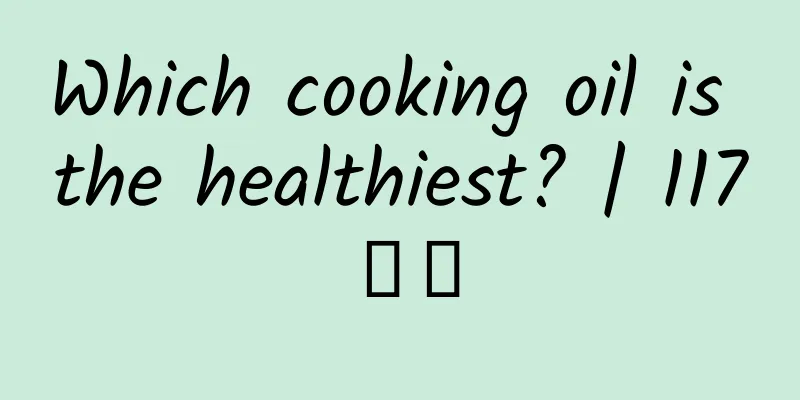Why is altitude sickness fatal?

|
Why do people need oxygen? If oxygen inhalation is only to "help burn" glucose and obtain ATP, then does direct intravenous infusion of ATP mean that oxygen inhalation is unnecessary? Coughing is a protective reflex of the airway, so what about airway spasm? What is apneic oxygenation? Why is the safe apnea time with an anesthesia mask oxygen inhalation only about 3 minutes, while the safe apnea time with high-flow oxygen inhalation can be as high as 15 minutes? People inhale 21% of oxygen and exhale 16% to 18% of oxygen, thus only utilizing 3% to 5%. In this case, is it sufficient as long as the oxygen concentration is greater than 5%? The main component of air is nitrogen. Does it also enter the blood circulation through the alveoli? If not, what is the significance of its existence? **Is plateau hypoxia due to insufficient oxygen concentration or insufficient oxygen partial pressure? **People and cars will experience altitude sickness, are there any commonalities? Why can brain cells be irreversibly damaged if they are deprived of oxygen for 5 minutes, while fingers can still survive if they are reattached after being severed for several hours? The emergence of smartphones allows people on both ends of the earth to chat "face to face"; the speeding high-speed rail has "shortened" the distance between cities; "AlphaGo" easily defeated the Go champion; humans use carbon dioxide to synthesize starch; Musk has threatened to send humans to Mars, but there is no oxygen on Mars, how can humans survive? The development achievements of mankind in the past 200 years have exceeded the sum of all previous development achievements. However, compared with the 4.6 billion years of the Earth, the history of mankind is just a blink of an eye. What happened in such a huge time gap? A bold guess is that there may be prehistoric civilizations on Earth. An even bolder guess is that humans may be space immigrants? In the vast universe, whether there is alien life or habitable planets, humans have been exploring. The so-called habitable planets have sunlight, water, air, and a suitable temperature like the Earth. Humans can even describe what aliens look like, with developed brains and degenerate limbs. Rather than aliens, they are more like human imaginations about their own evolution. There are many kinds of creatures on Earth, but they all have a common attribute: they are all carbon-based creatures. Higher animals, or vertebrates, have the same sense organs and organs as humans, and very similar gene sequences. However, humans are the only intelligent creatures, and the brains of other animals are like a lock that can only be opened in a fairy tale world. Ever since humans discovered pluripotent stem cells, they have been trying to use them to cultivate tissues and organs, just like nurturing a fetus, for example, using 21 days to create skin, 120 days to create red blood cells, and then creating a heart and kidneys, etc. They even want to use stem cells or genes to continuously repair damaged, aged or apoptotic tissue cells. If this technology is ultimately successful, humans will be able to live forever and become God, but God does not allow this to happen! Sunlight, water, and air are the three elements that humans rely on for survival. A person can survive for a week without food, three days without water, and only three minutes without breathing. What changes will happen to the body if you don’t breathe for 3 minutes? The main source of energy for the human body is aerobic metabolism of glucose. Glucose absorbed through the intestines and oxygen inhaled through the alveoli are "burned" in the mitochondria of the cells to generate water, carbon dioxide and ATP. ATP maintains the body's movement, thinking, metabolism, body temperature, growth, etc. There is a diligent "porter" on the cell membrane called the sodium-potassium pump, which continuously moves sodium ions out of the cell and potassium ions in from outside the cell. It is also related to the intake of nutrients and the discharge of metabolic waste. This "porter" needs to be paid "salary", that is, consuming ATP. Once the body is hypoxic, ATP production decreases, the "porter" lacks motivation and may "strike" at any time, which will lead to an increase in the concentration of sodium ions in the cell, accumulation of metabolites, and interruption of nutrient supply, so the cells swell and necrotize. Cells are the smallest units that make up tissues and organs. Once a cell dies, the tissues and organs it makes up will lose their vitality. However, the reactivity of different tissue cells in the human body to hypoxia is not consistent. Brain cells are the most vulnerable. Once hypoxia lasts for more than 5 minutes, brain cells will suffer irreversible damage. This is because the energy of brain tissue comes from aerobic metabolism of glucose, and there is almost no glycogen and sugar reserves. The oxygen reserve is only about 10 seconds. Once cerebral ischemia and hypoxia occur, the energy stored in the brain tissue will be exhausted in about 3 minutes, and the nerve cells in the cerebral cortex will die within 5 minutes, resulting in irreversible damage. Certain tissue cells in the human body have a certain amount of energy reserves. When they are hypoxic, they can obtain a small amount of ATP through anaerobic metabolism. Even a small amount of "salary" can enable the "porters" in these areas to continue working. The energy reserve of myocardial tissue is slightly greater than that of brain tissue. The kidneys and liver can tolerate 30 minutes of ischemia and hypoxia, and the limbs can tolerate 60 minutes of ischemia and hypoxia. This also suggests that a quick response is required during cardiopulmonary resuscitation, that is, the golden 4 minutes. If it exceeds 5 minutes, even if the heart is restarted, brain function will be difficult to recover! Since hypoxia can lead to insufficient ATP production, can direct intravenous infusion of ATP compensate for it? In fact, the total amount of ATP synthesized in an adult's cells every day is tens of kilograms, which can even reach their own body weight. Therefore, intravenous injection of ATP is only a drop in the bucket, and intravenously injected ATP cannot reach the cells. Since oxygen is vital to living things, where does it come from? Plants produce oxygen through photosynthesis, which is then inhaled by humans and animals to produce carbon dioxide, which is then absorbed by plants, and so on, maintaining a dynamic balance between oxygen and carbon dioxide in the air? In fact, the amount of oxygen consumed by humans and animals is not even in the same weight class as the amount of oxygen consumed by burning fossil fuels. There are 8 billion people in the world, and an adult consumes about 550 liters of oxygen every day. In 2022, the global oil consumption will exceed 100 million barrels per day, and 8 billion tons of coal and 4 trillion cubic meters of natural gas will be burned in a year. It takes about 2.4 tons of oxygen to burn one ton of coal, 14.7 tons of oxygen to burn one ton of gasoline, and 2 cubic meters of oxygen to burn one cubic meter of natural gas. Some people would say that plants are constantly producing oxygen, and the oxygen reserve in the atmosphere is very large, so it is a bit groundless to worry about insufficient oxygen! However, the greenhouse effect caused by the increase in carbon dioxide concentration is an indisputable fact. Studies have shown that for every 1 ppm increase in carbon dioxide, the oxygen concentration will decrease by 2 ppm. It is estimated that the oxygen concentration in the atmosphere will remain at the current level for about 40 million years. If calculated based on the current oxygen consumption, it will take less than 1,000 years for the oxygen concentration in the air to drop to a lower level, which may threaten the survival of some organisms on the earth. Plants are God's gift to mankind, not only providing food but also oxygen. However, the main component of air is not oxygen, but nitrogen, which accounts for 78%. Where does nitrogen come from and what is the meaning of its existence? Scientists speculate that ammonia was produced during the Big Bang, and then decomposed into hydrogen and nitrogen. Hydrogen was too light and gradually left the earth, leaving only nitrogen. Nitrogen does not support combustion and is not absorbed by plants and animals, so it maintains relative stability. In this sense, the nitrogen in the air is ancient and primitive. The human lungs are like a "bellows", which continuously draws in air, absorbs oxygen and expel carbon dioxide. Nitrogen is also inhaled into the lungs and then expelled "in every cent". It seems meaningless, but it is actually of great significance, which will be described in detail in the following chapters. Under special conditions, nitrogen can also enter the blood circulation. For example, in a high-pressure environment, nitrogen will dissolve in the blood. Once it quickly moves from a high-pressure environment to a low-pressure environment, nitrogen will be released from the blood and cause gas embolism. There is a very low content of xenon in the air. Research in recent years suggests that xenon is an ideal anesthetic gas with few adverse reactions and does not induce malignant hyperthermia. Fortunately, its content is very low, otherwise the consequences would be disastrous! When the first ray of sunlight shines through the mountains and forests, the spring breeze blows gently, mixed with the scent of flowers and grass, take a deep breath, slow down your pace, and look into the distance, you will feel so relaxed and happy! Those long-standing puzzles seem to have a little breakthrough. Could it be that this "natural oxygen bar" gave me inspiration? People who have lived in the plains for a long time are full of yearning and awe for the plateau, where the air is thin and it is easy to get altitude sickness! It is not that the oxygen concentration has decreased, but that the oxygen partial pressure has decreased. The oxygen partial pressure at sea level is 159 mmHg (1 mmHg=0.133 kPa), and the oxygen partial pressure at an altitude of 3,000 meters is only 110 mmHg. Most people only stay at the literal meaning of "altitude sickness" and lack in-depth understanding and experience. The human body is extremely complex. Perhaps we can explore the altitude sickness of humans from the altitude sickness of cars. The direct feeling of altitude sickness in cars is that the power is significantly reduced and the speed cannot be raised. The reason is that the oxygen content in the air is reduced, resulting in incomplete combustion of the "internal combustion engine", reduced thermal efficiency, and reduced horsepower. Similarly, the altitude sickness of humans is also due to insufficient oxygen intake, which leads to reduced aerobic metabolism of glucose and reduced ATP production, resulting in physical exhaustion. In addition, hypoxia can have adverse effects on the respiratory system, circulatory system, nervous system, etc., such as hypoxic pulmonary vasoconstriction, pulmonary hypertension, pulmonary edema, rapid heartbeat, confusion, nausea and vomiting, etc. The beauty of the Tibetan Plateau is sometimes out of reach, not because of the long distance, but because of the fear of altitude sickness. Most people have the impression that the elderly, the weak, the sick and the disabled are more likely to suffer from altitude sickness, while the young and strong are less likely to suffer from altitude sickness. The actual situation is not so. Altitude sickness may be related to the body's demand for oxygen and the body's emergency response to hypoxia. |
>>: Just lie down and relax, there is no such thing as fake wide hips!
Recommend
How to operate a community? Start from these 3 perspectives!
How can we maintain group chats without being ner...
Suxuan·Workplace Growth Camp|Everything is under control and everyone can understand it
【Completed】[Career Growth Camp Tool Kit] 01|SOP M...
Yangquan Course Mini Program Agent Price Query, How much is the Yangquan Course Mini Program Agent Price?
How much does it cost to be an agent for a course...
Mendel died in obscurity, but is now hailed as the father of genetics. What did he discover?
In today's biological community, everyone kno...
iOS-CoreLocation: I know where you are!
1. Positioning Steps: Create a CLLocationManager ...
What does an operational plan that satisfies the boss and is valuable look like? (Down)
What does an operational plan that satisfies the ...
KOC Creation Guide
Recently, the operation circle has been talking a...
Japan conducts 5G network-connected self-driving car trials
NTT DoCoMo and DeNA announced on November 11, 201...
Competitive product analysis of Tik Tok and Yoo Video!
Framework of this article 1. Background and Purpo...
Want to increase your followers through social media fission? Just follow these 9 steps
Social fission is currently a popular technique f...
Tom Cruise Movie Collection (1981-2017) 30 HD English subtitles
Tom Cruise, born on July 3, 1962 in New York, USA...
Don't make the mistake again! The secret to quickly distinguish peach, plum, apricot, cherry and plum, teach you how to do it in 1 minute
Every spring, flowers of all colors compete with ...
I heard that marble has radiation? The mineral that can really harm you is...
"Marble has radiation, it is dangerous to ke...
How to play the whole network integrated marketing? The most complete Internet marketing secrets revealed!
I just joined a new company some time ago, and I ...
China Automobile Dealers Association: China's auto dealer inventory warning index is 54.7% in August 2022
On August 31, 2022, the latest issue of "Chi...









